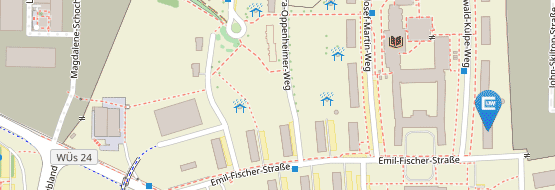Project-based learning
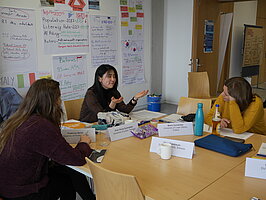
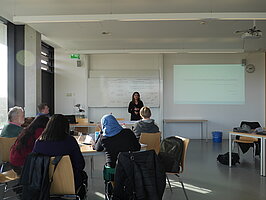
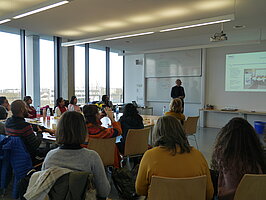
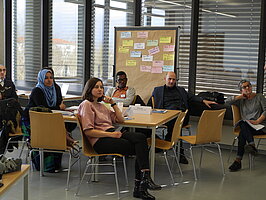
Aim of the strategy/method
Aims of the course:
- to know and be able to use different existing typologies (e.g. welfare state regimes (Esping-Andersen, 1990), skills regimes (Roosmaa & Saar, 2017), adult education systems (Desjardins, 2017), public policy models in adult education (Lima & Guimarães, 2011), lifelong learning models (Schultze & Casey, 2006), adult lifelong learning participation (Boeren, 2017)) in international and comparative adult education;
- to understand theoretical conceptual principles, practices and policies of adult education in different national and transnational contexts through research and reporting on selected topics of comparative international analyses;
- to know international and comparative studies of international organisations (OECD, EU) influential in adult education (such as Programme for International Assessment of Adult Competencies (PIAAC), Labour Force Survey (LFS), Adult Education Survey (AES));
- to know and be able to use contemporary methodological approaches and perspectives in comparative and international research on adult education;
- to understand the importance of geographic, social, economic, political, and cultural factors in international and comparative adult education research;
- to understand the preparation process of a research project in the field of adult education.
Aims of the student’s project-based learning:
- to learn and work together as a team;
- to be able to use their knowledge and skills when preparing a research project proposal from selected topics (based on identified real research problems) in a comparative adult education perspective;
- to develop deep content knowledge on the selected topic, as well as communications, problem-solving, creative, and critical thinking skills.
Setting
- Classroom
Type and name of the course, curriculum, number of students
International perspectives in adult education master’s level (1 year), 7 ECTS -10-15 students
Description of the strategy/method
The course is delivered in first and second semester.
In the first semester, the following formats are used: lecturing, student presentation of individual country cases on selected topic, group discussion, students’ review essay of selected topic based on selected scientific article, and individual consultations.
- To explain the process:
At the beginning of the semester, teachers give a few lectures on comparative adult education (AE) and explain how the work will be organised in the first and second semester. During this time, teachers discuss with students possible topics that students would be interested in working on. Then, based on their own interest, students discuss those topics with other students to identify common interests. Next, 4-5 groups are formed in the classroom based on students’ common interest in some AE topic. Each group includes 3 to 4 students. From that point on, students start to work as a group on their chosen topic (e.g. active ageing, counselling in AE, volunteers and AE, etc.). Each member of the group then researches more information on selected topic in a chosen county (e.g. active ageing in Norway, Portugal, Slovenia). Students need to do “small” research through an internet search and give a presentation to their classmates. When all presentations are finished, students need to write a review essay based on reading one scientific article covering selected topics and chosen countries. Students are free to choose the articles themselves, but the articles need to have a theoretical and an empirical part. In this way, they learn how articles are structured (based on an identified problem) and how to connect the theoretical with the empirical part – the knowledge needed to prepare a project proposal.
In the second semester, students work in groups (3-4 students) on the selected topic. By doing this, they need to prepare the research project proposal on the selected topic in a comparative perspective. This is the context for the project-based learning method.
- To explain the process:
Based on the knowledge gained in the first semester, students now work together in groups. First, they need to identify a research problem from the topic selected and formulate a research question (e.g. ‘What is the digital literacy of older adults in selected countries?’) and a hypothesis (e.g. ‘In all selected countries, the digital literacy level of older adults is lower than the digital literacy level of younger adults’). The problem identified needs to be real (supported by students’ practice, policy, or research evidence). Based on the identified problem, students need to do a comparative analysis, drawing on methodology and design project phases (proposal) that would lead to the solution of the identified problem. Working in the team, students make their own decisions about the project, including how they work and what they create, whereas the teacher’s role is to supervise student work and to make suggestions when students need help. The teacher meets with each group once every three weeks to discuss the quality of their work and to suggest ways of overcoming any obstacles they may be facing. When the group finishes their project proposal, they need to present it to the other students in the classroom. This is the time for group feedback on the group’s final project.
Materials required
Practices (good practice examples from different countries), policies (national, international), research articles, statistical sources, websites. Student groups choose their sources on their own, thereby demonstrating their ability to find and select relevant sources. However, if the majority of sources is just from webpages, teacher should direct students to some articles or book chapters on selected topic or send them some additional literature that is required for successful project-based learning on the selected topic.
Origin and theoretcial framework
The idea of learning by doing goes back to Ancient Greece (Socrates, Aristoteles), emphasising questioning, inquiring, and critical thinking, or John Dewey’s thoughts in the 20th century, which emphasised learning grounded in experience and driven by students’ interest (see, for example, Bell, 2010, Tan & Chapman, 2016). Against this background, problem-based learning emerged more than half a century ago as a practical teaching strategy in medicine, engineering, economics, and other disciplines. Problem-based learning puts the student in charge of asking questions and discovering answers, while being guided through research under the teacher’s supervision.
Risks and advantages
Advantages:
- learning in a team, gaining knowledge, and solving real problems;
- students work in line with their interests;
- students use theoretical knowledge and skills for practical purposes to suggest solutions to real problems;
- students are responsible for (organising) their own work.
Risks:
- some students in the group might be more engaged and might work more than others;
- students may choose a topic that may turn out to be not so interesting as they thought it would be at the beginning;
- resistance by students; they can feel insecure if they don’t know the method.
Other examples where you think it could be used
It can be used in all educational settings where the emphasis is put on students’ work and the application of theory and methods in real-world or practical settings.
Recommendations and tips for the implementation of the strategy/method
Present the work process to students at the beginning and explain why it is important. Students might initially feel that the work will be ‘quite easy’, but at the end, they all report that the process of coming to the final product was very demanding and that it took more time and effort than they thought it would at the beginning of the course or with more ‘classical’ methods.
References
Bell, S. (2010). Project-based learning for the 21st century: Skills for the future. The Clearing House, 83(2), 39-43.
Tan, J. C.L., & Chapman, A. (2016). Project-based learning for academically able students. Rotterdam: Sense Publishers.
Contact Persons
Borut Mikulec (Borut.Mikulex@ff.uni-lj.si)


